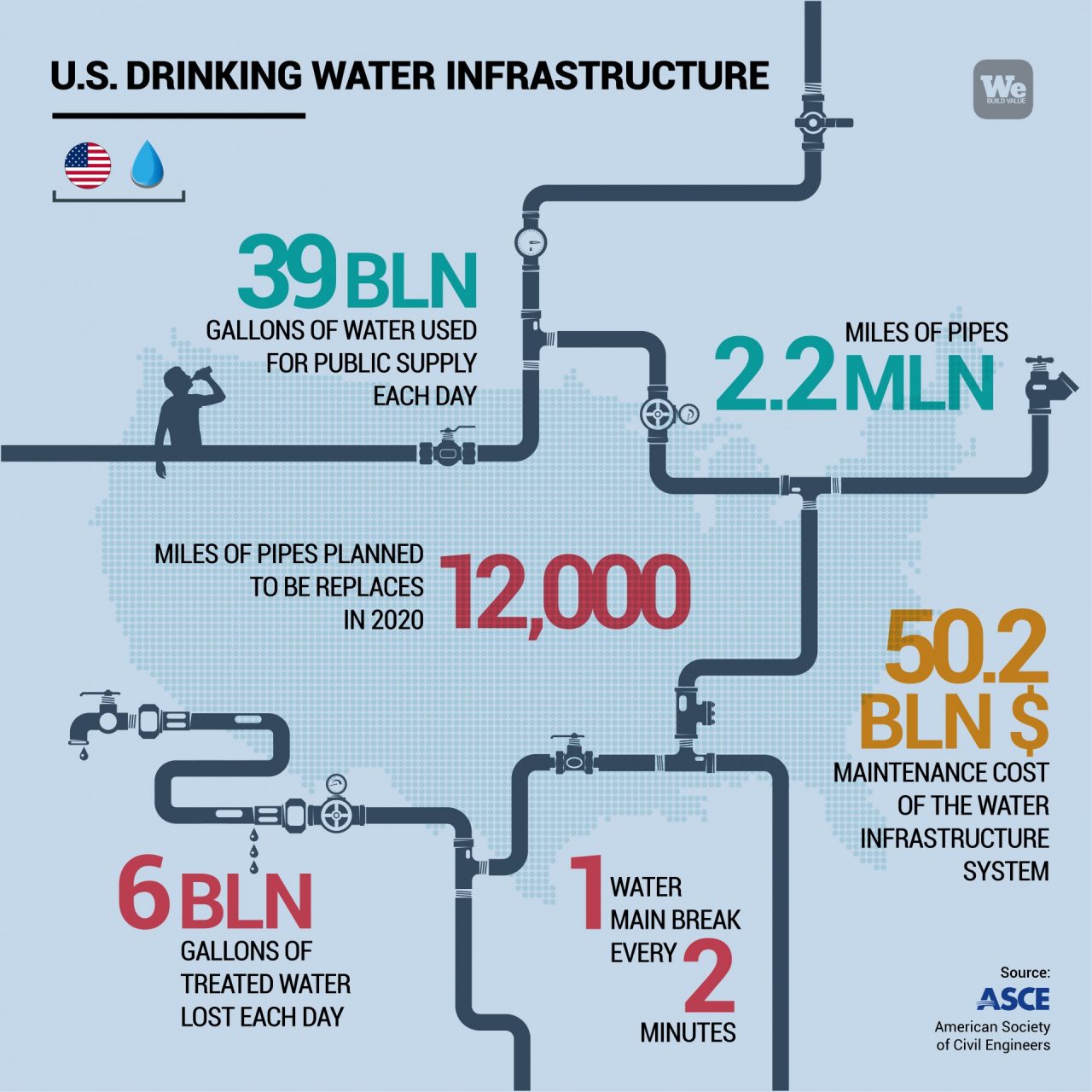Fifty years since the Clean Water Act of 1972 was introduced in the United States – the first federal law addressing the topic – individual states are again being called to take action to protect their water sources. The federal government has allocated more than $50 billion (€44.2 billion) in funding over the next five years to repair, build, or rebuild infrastructure for drinking water, wastewater and storm water. This is the most significant investment in this sector to date, and is part of the $1 trillion (€884.4 billion) bipartisan bill to redesign national infrastructure, recently passed by Congress.
The Environmental Protection Agency (EPA), which is administering the individual grants, is in the process of releasing lists of approved projects across various states. Key initiatives include an $11.7 billion (€10.3 billion) allocation for drinking water through the Clean Water State Revolving Fund and another $11.7 billion (€10.3 billion) through the (SRF). Another $15 billion (€13.3 billion) has been earmarked for lead pipe replacement, and $9 billion (€8 billion) to combat and manage “emerging contaminants”.
“Far too many communities still face significant water challenges, making these transformative investments in water infrastructure so crucial,” said EPA Administrator Michael S. Regan. Currently, up to 10 million US households and 400,000 schools and daycare centers have lead service lines that compromise clean water, according to EPA data.



